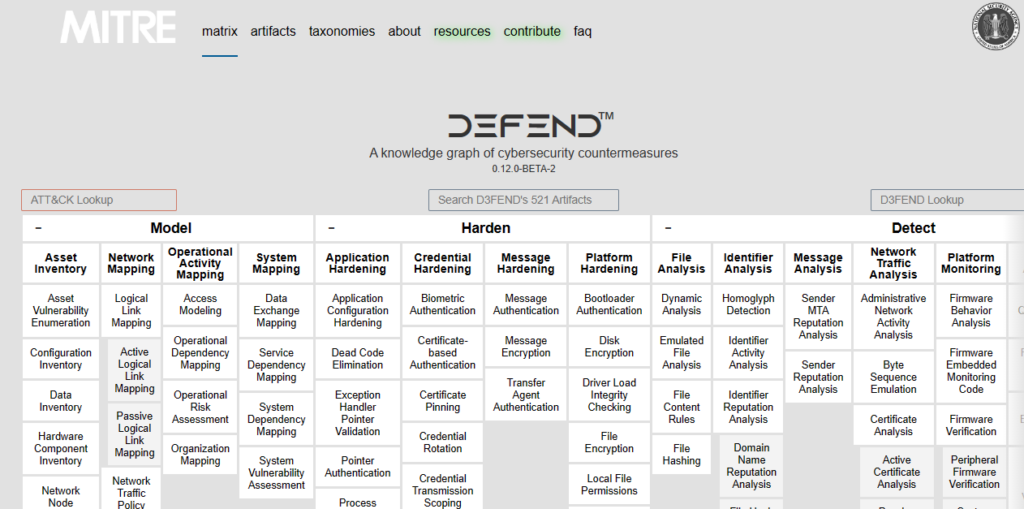The D3FEND framework, developed by MITRE, is a comprehensive cybersecurity framework that provides a common language and structure for describing defensive techniques and capabilities. The framework is organized into six categories, each of which includes multiple procedures that organizations can use to improve their defense posture against cyber threats.
How does D3FEND work?
D3FEND, just like ATT&CK, is split up into multiple categories. This is all then stored on the D3FEND matrix, where we can find the various procedures. There are six categories overall, expanding from the original three that were established when it was first published.
The six categories of the D3FEND matrix are Model, Harden, Detect, Isolate, Deceive, and Evict.

- The Model category includes procedures related to access control, such as Attribute Based Access Control (ABAC) and Role-Based Access Control (RBAC).
- The Harden category includes procedures related to hardening systems and networks, such as Application Whitelisting and Data Encryption.
- The Detect category includes procedures related to detecting potential threats, such as Anomaly Detection and Security Information and Event Management (SIEM).
- The Isolate category includes procedures related to isolating systems and networks from potential threats, such as Micro-segmentation and Virtual Private Networks (VPNs).
- The Deceive category includes procedures related to deceiving attackers, such as Honeypots and Sandboxing.
- Finally, the Evict category includes procedures related to responding to and recovering from cyberattacks, such as Backup and Restore and Network-Based Incident Response.
Who is using D3FEND?
Organizations across a wide range of industries are using the D3FEND framework to improve their cybersecurity defenses. For example, healthcare organizations are using the framework to improve patient data security and comply with regulatory requirements. Financial institutions are using the framework to protect against financial fraud and improve their overall risk management. Government agencies are using the framework to protect against cyberattacks on critical infrastructure and sensitive government information.
Should I be using D3FEND?
One of the key benefits of the D3FEND framework is that it provides a common language and structure for describing defensive techniques and capabilities. This makes it easier for organizations to communicate with each other about cybersecurity threats and defenses, which can improve collaboration and information sharing across industries and sectors. The framework is also designed to be flexible and adaptable to different environments and use cases, which makes it useful for organizations of all sizes and types.
Looking to the future, it is likely that the D3FEND framework will continue to evolve and gain adoption among organizations across a wide range of industries. As cyber threats continue to evolve and become more sophisticated, organizations will need to rely on comprehensive and adaptive defense strategies in order to protect against them. The D3FEND framework provides a structured approach to building a comprehensive defense strategy, which can help organizations prioritize their investments in cybersecurity resources and improve their overall defense posture.
There are also opportunities for the D3FEND framework to be used in new and innovative ways. For example, machine learning algorithms could be used to analyze data from the framework and identify patterns and trends in cyber threats and defenses. This could help organizations to identify emerging threats more quickly and develop more effective defenses against them. Additionally, the D3FEND framework could be integrated with other cybersecurity frameworks and standards to create a more comprehensive and interoperable cybersecurity ecosystem.







